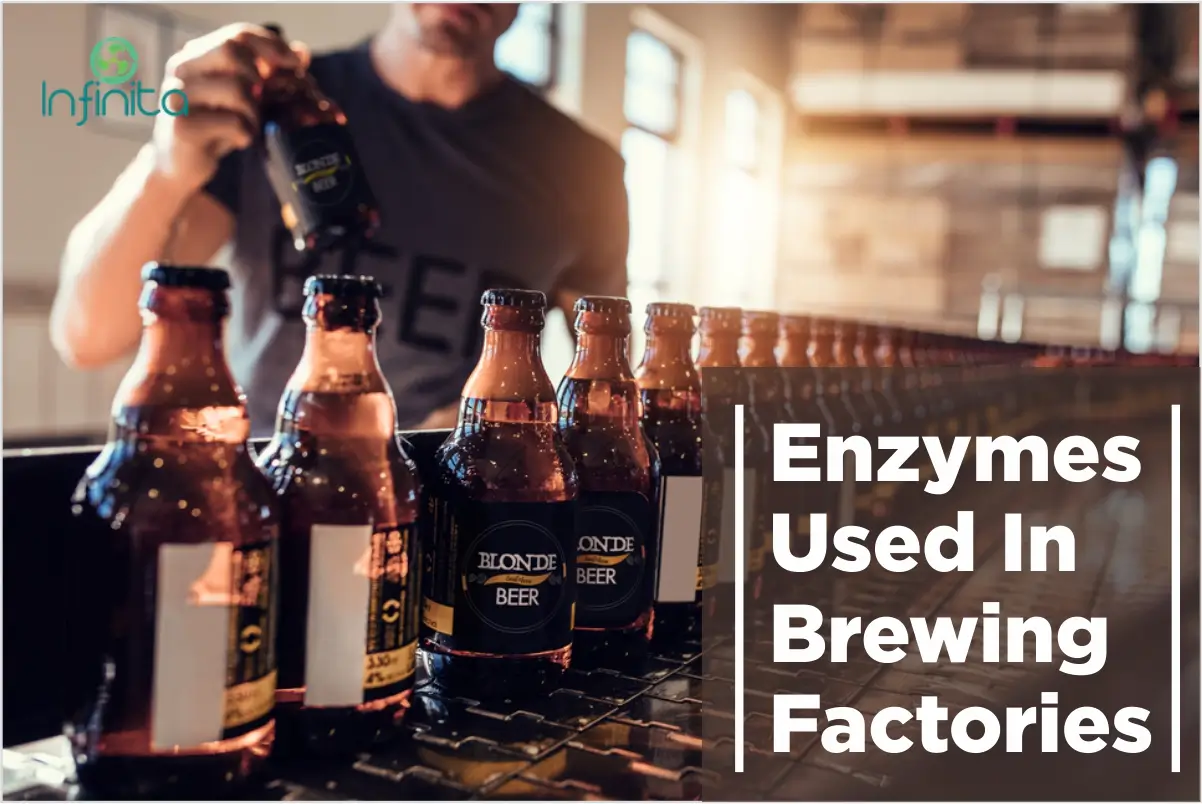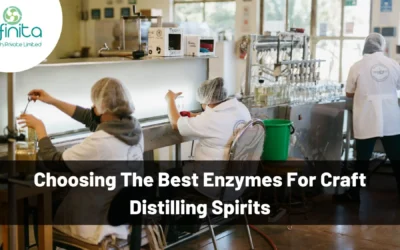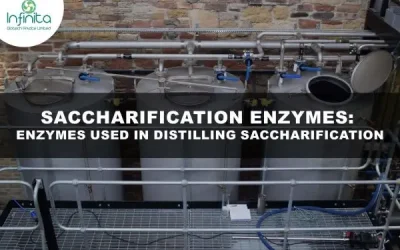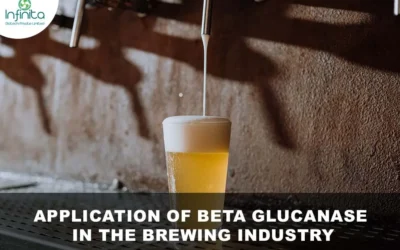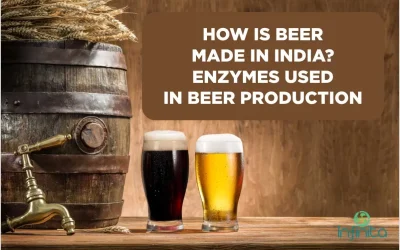Even for Associate in Nursing recent trade like brewage production, new industrial processes take pleasure in exploitation enzymes developed from microorganism sources. Last years’ quality issues like flavour control, beer stability and general cost savings in the industry are indirectly related to efficient solutions of environmental problems. The future focus would be on a wider application of enzymes to brew with high amounts of inexpensive raw materials like barley. Alternative beer processes are under development for production of wort and beer with higher productivity and reduced amounts of waste and by-products. In this article let’s talk about Enzymes used in brewing industry.
Introduction
Beer and wine have been part of our social life for so many years and both beverages are produced by yeast fermentation of sugars. Grapes are the basis for wine and barley is the basic ingredient for beer. Grapes that are matured already contain the sugars needed for the fermentation, while barley contains starch that has to be broken down to fermentable sugars before the yeast can make alcohol. Therefore, ancient production contains an additional step compared with wine-making, namely malting in which enzymes needed for the degradation of starch into fermentable sugars are produced.
Germinated barley or other cereals like wheat and sorghum is what is barley:
The grains area unit “steeped” transferral the water content from concerning twelve-tone music to forty fifth.
They are allowed to germinate for 4-6.
Finally, the germination is stopped by heating (kilning) reaching a final wet content of concerning four-dimensional.
Some enzymes like β-amylases are already present in the barley, but the majority of enzymes are produced during the germination which includes α-amylases and proteases and in the final malt all the enzymes required for the conversion of “grains” into a possible liquid (wort).
Limitations of malt enzymes are that they can only work at certain temperatures, pH values, etc and the activities might be too low to do a proper job in proper time. But on the other hand, commercial enzymes can be designed to work at preferred temperatures and pH values, to have more enzymatic power, or to express wanted enzyme activities that are not present in malt. Therefore, the addition of exogenous enzymes makes the brewing process easier, faster and more consistent. It brings brew masters extra flexibility in the choice of raw materials due to less dependence on malt enzymes, as well as providing an opportunity to create new products, which is not possible to make with malt enzymes alone. Commercial enzymes also provide the possibility to improve beer quality by avoiding off-flavours. The increasing concern on resources and CO2- emission has additionally placed the employment of business enzymes among the production trade focussed. With the employment of exogenous enzymes, additional will be extracted from the raw materials, more local raw materials and un-malted grains can be used, saving significant amounts of energy and transport.
Commercial Enzymes From Exogenous Sources
The traditional supply of enzymes used for the conversion of cereals into brewage is barley malt. If deficient accelerator activity is a gift within the mash, there will be several undesirable consequences:
The extract yield will be too low
Wort separation will take too long
The fermentation process will be too slow
Too little alcohol will be produced
The beer filtration rate will be reduced
The flavour and stability of the brewage are inferior.
Exogenous enzymes area unit accustomed to supplement the malt’s own enzymes so as to forestall these issues. Furthermore, industrial enzymes are used to ensure better adjunct liquefaction, to produce low-carbohydrate beer (‘light beer’), to shorten the beer maturation time, and to produce beer from cheaper raw materials.
Brewing With Barley
The traditional use of barley has been limited to 10-20% of the grist when using high-quality malts. Using under modified malts, brewing process becomes more difficult and so the mash needs to be supplemented with extra enzyme activity if the brewer is to benefit from the advantages of exploitation un-malted barley whereas still maintaining production performance. Brewers usually add a malt-equivalent blend of α-amylase, β-glucanase and protease at the mashing-in stage or they may choose to add enzymes separately as required.
Enzymes At Work
Many breweries have been running programs within the last two years in order to increase efficiency and optimise raw material usage while focusing on the use of commercial enzymes to shorten the production time, increase capacity, and allow the use of a raw material alternative to malt.
Some important examples are:
Exchanging a part of the malt with barley has been well-liked as a result of exploitation barley together with business enzymes offers an equivalent brewage quality like malt.
Introducing a higher content of starch hydrolysing enzymes offer the possibilities of producing “light beer” also called “low-calorie beer”.
An accelerator resolution for diacetyl management when fermentation improves vessel utilisation, save energy and ensures a high brewage quality when a reduced maturation time.
Diacetyl is made by the non-enzymatic aerophilous chemical change of α-acetolactate, that is created by the yeast throughout primary fermentation. The diacetyl gets removed because of the yeast again during the beer maturation stage by conversion to acetoin, which has a much higher flavor threshold value. In fact, acetoin is nearly tasteless compared with diacetyl.
Effective Adjunct And Malt Solutions
Brewers United Nations agency need stuff value savings or use of native raw materials that could supply under-modified malts or increase the magnitude relation of adjunct. The limiting issue is to make sure an adequate advanced of accelerator activities for high-quality wort. The accelerator suppliers provide a variety of intermingled product to make sure comfortable FAN, extract yield, filterability, and fermentability for high-quality index final beers. Cost effective adjunct and malt solutions square measure created with β-glucanase, xylanase, α-amylase, and protease.
Faster Throughput And More Extract
Even with smart malts, it’s doable to realise four-hundredth longer brewage filter cycle runs, 0.5% to 1% more extract and 0.5% reduced beer losses for more brews per day. Faster turnout and additional extract square measure created with β-glucanase and arabinoxylanase.
